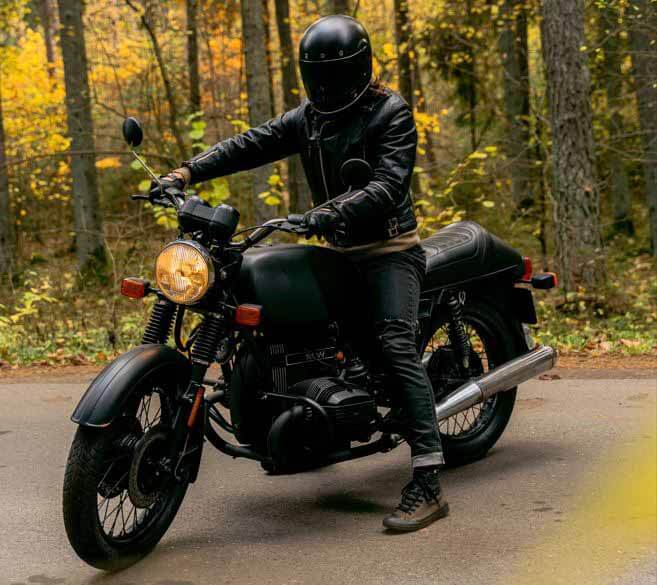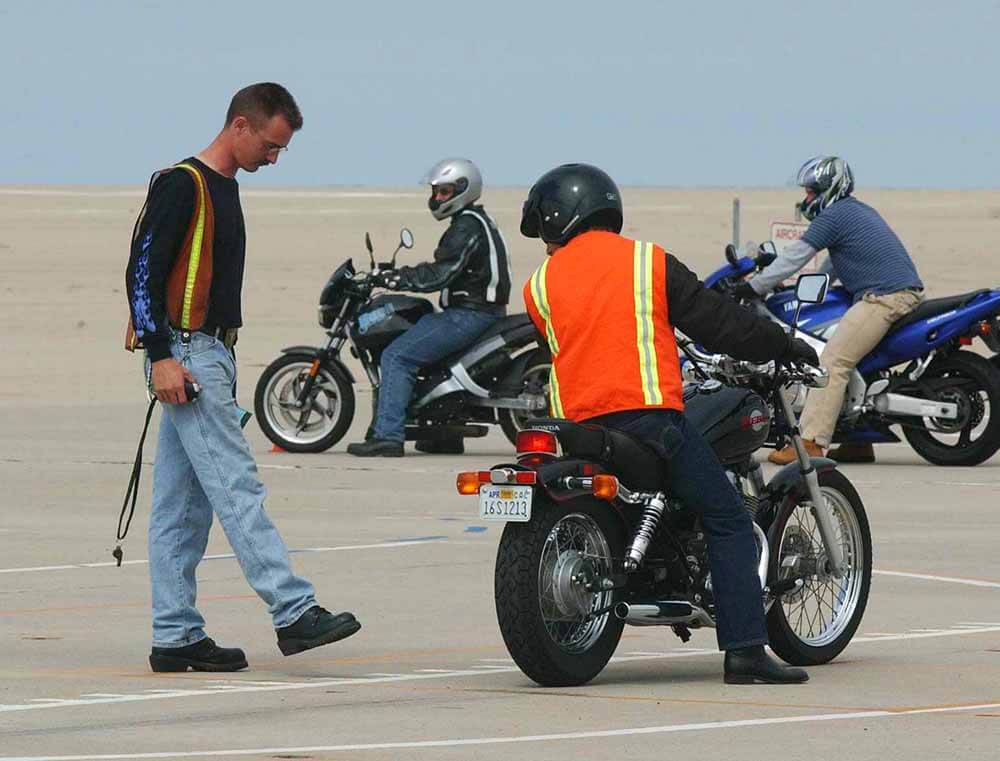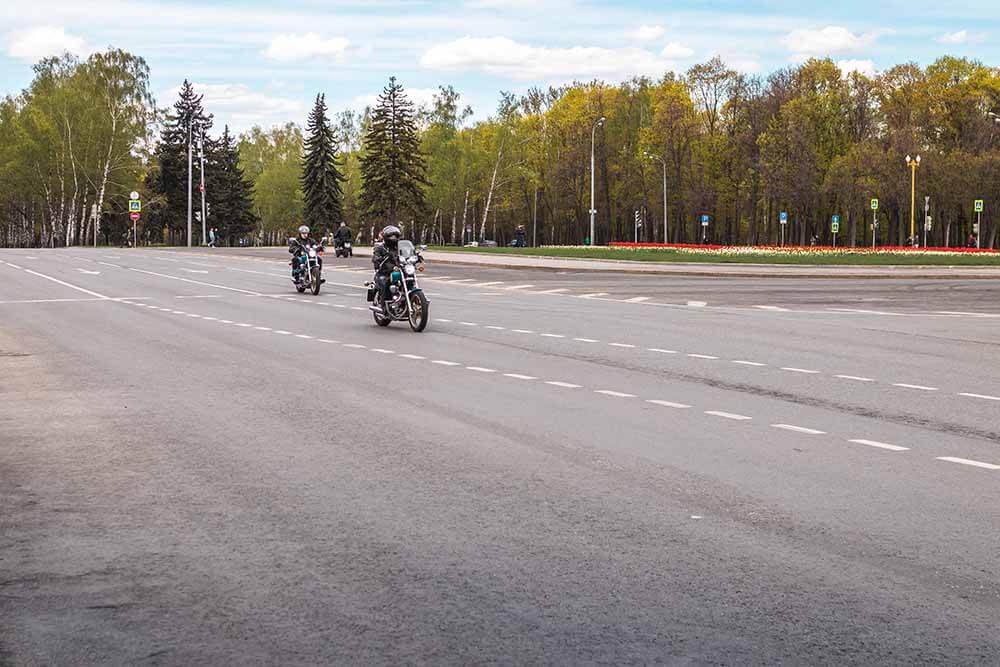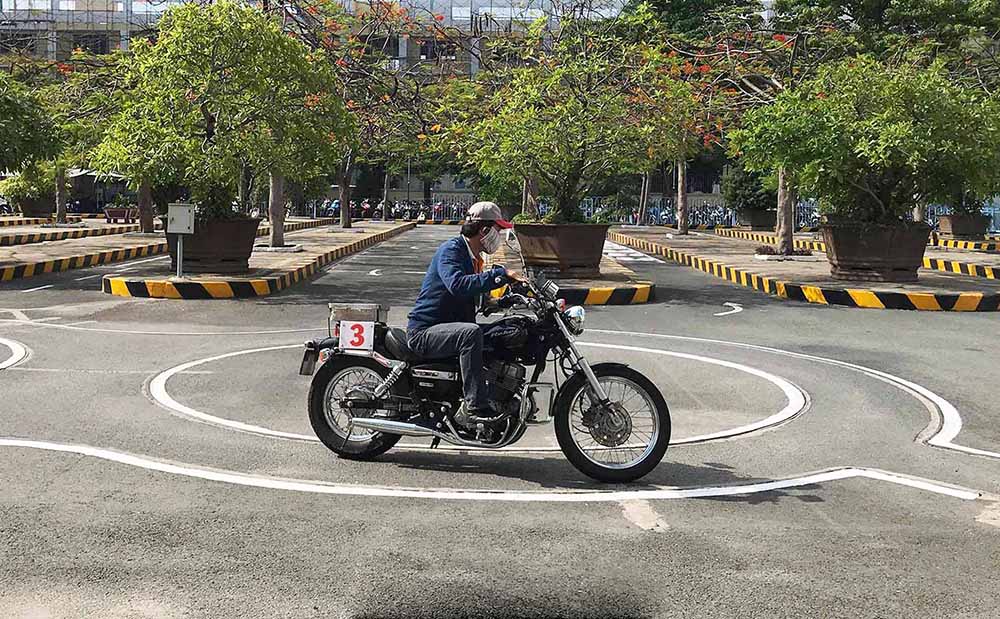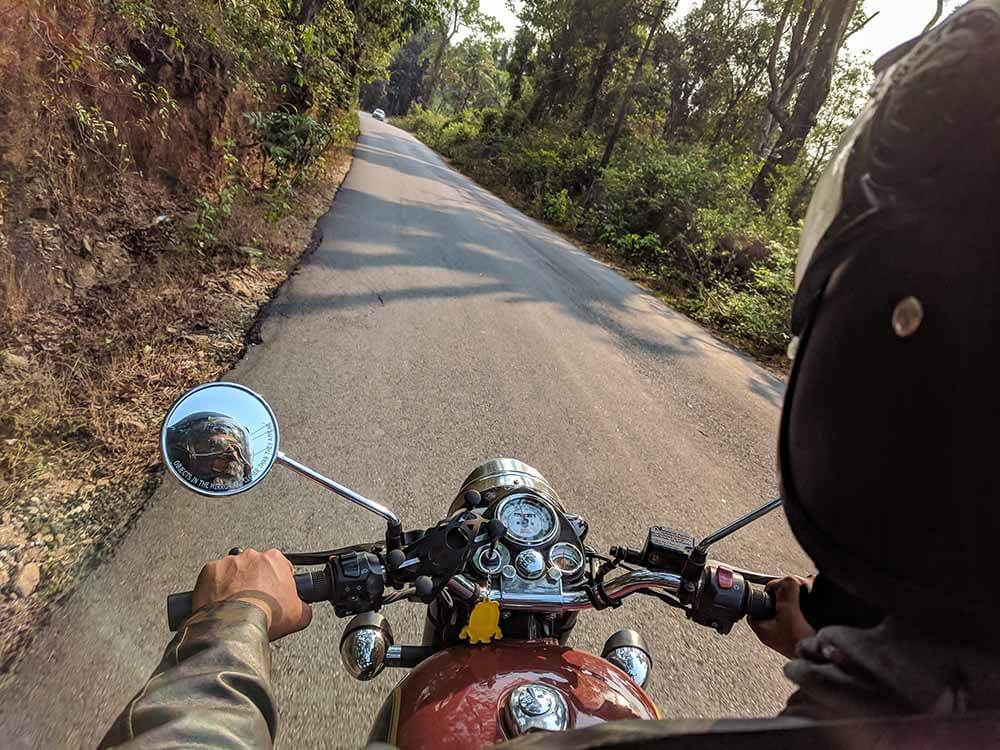Do you find it hard to balance your motorcycle while riding slow? Do you experience weaving and wobbling? Do you find it hard to turn while slowly riding? If this sounds like something you are familiar with, then you are in the right place.
First, let’s start by saying that speed creates stability because of the gyroscopic effect of the wheels. You lose stability as you reduce speed, but we can’t always be riding at speed. Sometimes, we must ride slowly at the traffic lights, on the busy streets, or even in the parking zones. However, riding slowly is not easy. It needs expertise.
In this article, we will share some fantastic motorcycle slow riding techniques to help you figure out your riding skills fast.
Let’s dive right in.
Motorcycle Slow Riding Techniques for You
1. Familiarize Yourself with Your Motorcycle
First, note that every motorcycle is different. You must know how your motorcycle works to achieve better control. For example, how sensitive is the throttle or the brakes? Knowing this gives you better control of your motorcycle.
Have you ever heard of the clutch bite? Success at riding a motorcycle at slow speed depends on how well you control the clutch release. Learning to ride in the friction zone gives the best results. Familiarizing yourself with these controls makes it easier to take off smoothly or slow down when required.
Often people ask, how do I become a better motorcycle rider? The first step is to familiarize yourself with the controls of your motorcycle.
2. Clutch, Throttle, and Brake Coordination
All right, so now you are familiar with your controls. How can you use that to help you remain stable during slow riding? Remember, we said earlier that momentum creates stability, right? You may have observed that if you release the clutch all the way while idling, the engine will not stall. The motorcycle moves forward at a walking pace.
Now, you can roll the throttle to increase speed if you are about to topple. Alternatively, use the clutch and the rare brakes to reduce momentum. Don’t press the brakes all the way down. A light touch is enough to achieve your desired speed. Avoid the front brakes at all times, unless you need to stop very quickly. The front brakes shift weight to the front, making it hard for you to maintain balance.
3. Keep Your Feet on The Foot Pegs While Slow Riding
Keeping your feet on the foot pegs while slow riding might sound unrealistic, but it’s the fundamental determinant of who is a better rider than the rest. Most riders rest their feet on the ground and walk like a salamander to maintain balance while slowly riding. It is not even slow riding; perhaps we call it the salamander ride. It’s time to unlearn and learn.
Master these motorcycle slow riding techniques, and you will never set your feet down while slow riding your motorcycle. You need your feet on the foot pegs to have full control over the rare brakes. Secondly, spreading your legs out makes you wobble and lose balance.
Remember clutch, throttle, and rare brake coordination? Yeah, now you don’t need to salamander.
4. Look Ahead
Don’t look down at the front tire or the surroundings; you will lose balance. Always look ahead. Looking ahead helps you make turns effortlessly. It prepares you for the next turn. Look far in front at all times, even when making a turn, this is what professional racers and skilled riders do.
Most riders will tell you that your motorcycle follows your eyes. But then we all know the eyes feed the brain, the brain directs your hands, and you make a smooth turn.
5. Balancing, Motorcycle Slow Riding Techniques
Let’s talk about balance. How do you not fall while riding at 5 mph and trying to make a turn? That is achieved through good body posture. To get good body posture, get closer to the tank and hug the tank with your knees. Relax your hands on the handlebars and have your legs firmly on the foot pegs. Supposing you are making a right turn, lean your body in the opposite direction to achieve a counterbalancing effect. So long as you have the correct posture, it’s hard for you to topple or feel wobbly.
6. Keep Practicing
It’s always hard at the beginning, but we can all agree that practice makes perfect, right? Start riding slowly in a straight line. Play around with the clutch throttle and the rare brakes to adjust your speed. Once you are confident that you have achieved it, it’s time to make turns.
What Techniques Should You Use When Making a Slow Turn on a Motorcycle?
There are two techniques you can use while making a slow turn.
- Counterweighting motorcycle slow riding technique
- Counter steering motorcycles slow riding technique.
We mentioned Counterweighting earlier in the article. Counterweighting is ensuring your body remains upright as the motorcycle leans. The best way to achieve this is by positioning your weight on the right while turning left and vice versa. So, let’s look at counter-steering.
Turning in the direction you want to go while riding slow may sound easy, but it can be challenging, especially if you are in a narrow space. The best way to handle this is to allow your right arm to relax because it’s easier to control the throttle. Let the left arm do the job.
Position yourself right if you want to turn from a stop. Lean the motorcycle as far as you are comfortable while supporting it with your left foot. The right foot should be on the rear brake, and the handlebars turned to full lock. Turn your head to the exit.
While maintaining the lean angle and the turn, release the clutch and roll the throttle smoothly. You should make a smooth turn if you do it the right way. If you don’t, well, don’t hang yourself. Keep practicing. Eventually, you will improve your slow riding skills.
How can I Improve My Riding Skills?
We have encountered this question multiple times, and since our only goal is to help you become a better rider, let’s look at it. There is always room for improvement.
1. Break Longer and Lighter
The best lesson you’ll ever take while riding is to brake right. Go smooth on the brakes. Press gently until you get to a stop. Likewise, when you start moving, release the brakes smoothly. That gives you control over the motorcycle even if something unexpected happens and you need to stop—for example, a car in front of you hitting emergency brakes.
2. Be Aware of Your Corner Entry Speed
Smooth entry into corners needs deceleration and gradual acceleration as you exit the corner. That gives you more control over the motorcycle. Most accidents happen when we are taking corners. If you enter the corner at high speed, the chances you will control your motorcycle if the need arises are slim.
3. Ride at a Safe Distance
Always maintain a safe distance between you and the motorists ahead of you. Safe distancing applies even at traffic lights. You never know if the other person will do the right thing. Always know that being on a motorcycle place you at a disadvantage. It’s easier to get into blind spots, and it’s also easier for other motorists to disregard your presence. Resist being a victim.
4. Don’t Get Stuck into Slow Riding
Still on safety, if you need to accelerate to get into a safe zone, do not hesitate. Better safe than sorry, right? If you notice anything wrong, maybe it’s a truck that you feel might make a swerve and endanger your life. Please scamper to safety very fast.
5. Cover Your Brakes at the Intersection
Be very alert at the intersections. Intersections are dangerous points. Things can go wrong fast, and your reaction time is crucial. That’s why you must always have your foot on the brake when you get to the intersections. That way, it’s easier to brake or release instantaneously and speed off. You might save a life.
Lastly, this is not about balance, clutches, brakes, or speed, but it’s essential whether you are slow riding or not.
6. Dress in The Right Gear
We cannot overstress the need to dress in the correct riding gear. You know how to go about that and since this article was about motorcycle slow riding techniques, let’s stick to that.
Related: What to Wear When Riding a Motorcycle?
Final Thoughts
Highway rides are for everyone, but it takes skill to be an efficient slow rider. Motorcycle slow riding techniques are acquired slowly through practice until you master them. First, know your motorcycle controls well. Secondly, learn to coordinate your clutch, throttle, and rare brakes. Avoid the front brake to avoid shifting weight to the front unless you need to stop immediately. Ride in the friction zone. Learn to keep your feet on the footpegs and your eyes ahead. Position yourself right to achieve balance. Keep practicing. Above all, keep safe, dress right and be in control of your brakes.
Follow these motorcycle slow riding techniques, and you will be a pro within a short time.
Information for this article was partially sourced and researched from the following authoritative Government, educational, corporate, and nonprofit organizations:
Sharing the road with motorcycle riders
Motorcycle safety: The rider and the gear
About the Author:
Michael Parrotte started his career in the motorcycle industry by importing AGV Helmets into the North American market. He was then appointed the Vice President of AGV Helmets America, total he worked with AGV Helmets for 25 years. In addition, he functioned as a consultant for KBC Helmets, Vemar Helmets, Suomy Helmets, Marushin Helmets, KYT Helmets, and Sparx Helmets.
In 1985, He is the Founder of AGV Sports Group, Inc. cooperation with AGV Helmets in Valenza Italy
Click here for LinkedIn Profile: https://www.linkedin.com/in/parrotte/
Click here for complete AGV Helmet & AGVSPORT History https://agvsport.com/michael-parrotte
Click here for all AGV Sports Group Social Media information http://agvsport.info/
FM/IR

